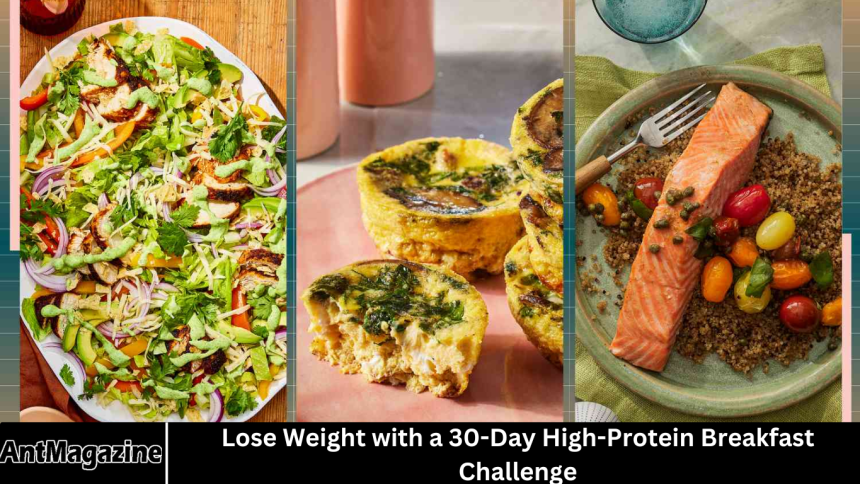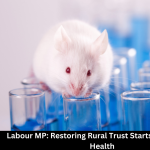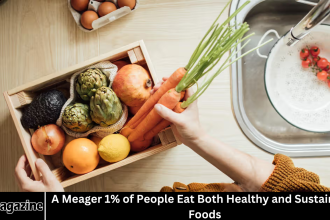Are you stuck in a cycle of morning hunger, energy slumps, and stubborn weight that just won’t budge? The problem might not be your willpower, but your breakfast. The standard American breakfast of sugary cereals, pastries, and toast often sets us up for a day of cravings and overeating.
- Why a High-Protein Breakfast is a Game-Changer for Weight Loss
- The Rules of the 30-Day High-Protein Breakfast Challenge
- Your 30-Day High-Protein Breakfast Plan: A Week of Ideas
- Day 1: The Classic Power Scramble
- Day 2: Creamy Greek Yogurt Parfait
- Day 3: Savory Cottage Cheese Bowl
- Day 4: Protein-Packed Smoothie
- Day 5: Hearty Turkey Sausage & Veggie Skillet
- Day 6: Make-Ahead Egg Muffins
- Day 7: “Proats” (Protein Oatmeal)
- Pro Tips for Success During Your Challenge
- Beyond the Scale: Other Benefits You’ll Experience
- Frequently Asked Question
- What if I’m not hungry in the morning? Do I have to force myself to eat?
- I’m vegetarian/vegan. How can I possibly get 30 grams of protein?
- Is it expensive to eat this much protein?
- Will I get bored eating eggs and yogurt every day?
- I have a sweet tooth. Are there any options for me?
- What should I drink during this challenge?
- What happens after the 30 days? Will I gain the weight back?
- Conclusion
What if you could transform your mornings—and your entire weight loss journey—with one simple change? Welcome to the 30-Day High-Protein Breakfast Challenge.
This isn’t just another fad diet; it’s a science-backed strategy to reset your metabolism, torch fat, and finally achieve the sustainable results you’ve been looking for.
More Read: A Meager 1% of People Eat Both Healthy and Sustainable Foods
Why a High-Protein Breakfast is a Game-Changer for Weight Loss
For decades, we’ve been told breakfast is the most important meal of the day. The truth is, what you eat for breakfast matters infinitely more than simply eating it. Shifting your first meal to be protein-focused leverages powerful physiological mechanisms that promote fat loss.
The Science of Protein: How It Fuels Fat Loss
-
Boosts Metabolism and Increases Thermogenesis: Your body uses energy to digest food, a process called the thermic effect of food (TEF). Protein has a significantly higher TEF (20-30%) compared to carbohydrates (5-10%) and fats (0-3%). This means your body burns more calories simply by processing the protein you eat.
-
Curbs Appetite and Reduces Cravings: Protein is the most satiating macronutrient. It increases the levels of hormones like GLP-1 and PYY (the “I’m full” signals) while reducing levels of ghrelin (the “I’m hungry” hormone). A high-protein breakfast keeps you feeling satisfied for hours, preventing mid-morning snack attacks on donuts and vending machine junk.
-
Preserves Lean Muscle Mass: When you’re in a calorie deficit to lose weight, your body can break down muscle for energy. Since muscle tissue is metabolically active (it burns calories at rest), losing it is counterproductive. Adequate protein intake signals to your body to hold onto this precious muscle while primarily burning fat for fuel.
-
Stabilizes Blood Sugar: Unlike carb-heavy breakfasts that cause a rapid spike and subsequent crash in blood sugar, protein is digested slowly. This leads to sustained energy levels, better focus, and no more 10 a.m. slump. Stable blood sugar also means fewer insulin spikes, a hormone that directly promotes fat storage.
The Rules of the 30-Day High-Protein Breakfast Challenge
Ready to commit? The rules are simple but powerful. For the next 30 days, you will:
-
The Protein Target: Aim for 30-40 grams of protein at breakfast. This is the sweet spot research suggests is most effective for satiety and metabolic boost.
-
Prioritize Whole Foods: Focus on getting your protein from whole or minimally processed sources like eggs, Greek yogurt, cottage cheese, lean meats, and protein powders.
-
Eliminate Refined Carbs and Sugars: Say no to sugary cereals, pastries, white bread, and syrups. Instead, pair your protein with high-fiber carbs like vegetables, berries, and whole grains.
-
Don’t Fear Healthy Fats: Include a source of healthy fat like avocado, nuts, seeds, or olive oil. This combination of protein, fiber, and fat is the ultimate trifecta for fullness and stable energy.
-
Hydrate: Drink a large glass of water before or with your breakfast to aid digestion and hydration.
Your 30-Day High-Protein Breakfast Plan: A Week of Ideas
To make this challenge effortless, here is a sample one-week meal plan. You can mix, match, and repeat these ideas throughout the month. Each meal contains 30-40 grams of protein.
Day 1: The Classic Power Scramble
-
Recipe: Sauté a handful of spinach and diced bell peppers. Add 3 whole eggs and ½ cup of liquid egg whites. Scramble together. Serve with a side of ¼ avocado.
-
Protein Source: Eggs, Egg Whites
-
Why It Works: A perfect balance of complete protein, healthy fats, and fiber-rich vegetables to start your week strong.
Day 2: Creamy Greek Yogurt Parfait
-
Recipe: 1.5 cups of plain Greek yogurt (or Skyr), mixed with a scoop of vanilla or unflavored protein powder. Top with ½ cup of mixed berries and 1 tablespoon of chia seeds.
-
Protein Source: Greek Yogurt, Protein Powder
-
Why It Works: Extremely quick to prepare and packed with probiotics from the yogurt for gut health.
Day 3: Savory Cottage Cheese Bowl
-
Recipe: 1.5 cups of 2% cottage cheese. Top with sliced cucumber, cherry tomatoes, a drizzle of olive oil, and a sprinkle of everything bagel seasoning.
-
Protein Source: Cottage Cheese
-
Why It Works: Cottage cheese is a stellar, slow-digesting casein protein that will keep you full all morning. The savory twist is a welcome change.
Day 4: Protein-Packed Smoothie
-
Recipe: In a blender, combine 1 cup of unsweetened almond milk, 1 scoop of protein powder, 1 tablespoon of almond butter, a handful of spinach, and ½ cup of frozen blueberries.
-
Protein Source: Protein Powder
-
Why It Works: The ultimate on-the-go breakfast. It’s easily digestible and perfect for pre-or-post workout.
Day 5: Hearty Turkey Sausage & Veggie Skillet
-
Recipe: Brown 4 oz of lean turkey sausage with onions and mushrooms. Add two handfuls of kale and cook until wilted. Serve with two poached eggs on top.
-
Protein Source: Turkey Sausage, Eggs
-
Why It Works: Feels like a decadent weekend brunch but is incredibly lean and nutritious.
Day 6: Make-Ahead Egg Muffins
-
Recipe: Whisk 6 eggs with ½ cup egg whites. Pour into a greased muffin tin. Add diced ham, broccoli, and a little cheese. Bake at 375°F (190°C) for 20 minutes. Make a batch for the week!
-
Protein Source: Eggs, Ham
-
Why It Works: Meal prep champion. Grab two for a quick, hot breakfast any day of the week.
Day 7: “Proats” (Protein Oatmeal)
-
Recipe: Cook ½ cup of rolled oats with water or milk. Once cooked, stir in a scoop of protein powder and a tablespoon of ground flaxseed. Top with a few sliced almonds.
-
Protein Source: Protein Powder
-
Why It Works: Satisfies the classic oatmeal craving while supercharging it with protein.
Pro Tips for Success During Your Challenge
-
Meal Prep is Key: Spend 1-2 hours on the weekend hard-boiling eggs, making egg muffins, and pre-portioning yogurt or smoothie ingredients.
-
Invest in a Quality Protein Powder: Whey, casein, or plant-based blends (pea, brown rice) are invaluable tools. Look for ones with minimal ingredients and low sugar.
-
Listen to Your Body: You might find you naturally start eating less at lunch because you’re so full. Don’t force yourself to eat if you’re not hungry.
-
Spice It Up: Use herbs, spices, hot sauce, and salt-free seasonings liberally to keep your taste buds excited without adding calories.
-
Stay Consistent, Not Perfect: If you have a morning where you only hit 25 grams of protein, don’t quit. The goal is consistency over 30 days, not perfection every single day.
Beyond the Scale: Other Benefits You’ll Experience
While weight loss is a primary goal, participants in this challenge often report a host of other benefits:
-
Sustained Energy: No more mid-morning crashes.
-
Reduced Cravings: Particularly for sugary and salty snacks.
-
Improved Mental Clarity: Stable blood sugar leads to better focus.
-
Better Body Composition: You’ll be losing fat while preserving muscle, leading to a more toned appearance.
Frequently Asked Question
What if I’m not hungry in the morning? Do I have to force myself to eat?
I’m vegetarian/vegan. How can I possibly get 30 grams of protein?
- Tofu & Tempeh: Make a fantastic scramble with veggies.
- Plant-Based Protein Powder: Add a scoop to oatmeal or a smoothie.
- Legumes: Add edamame or black beans to a breakfast burrito bowl.
- High-Protein Yogurt: Look for yogurts made from soy, pea, or almond milk that are fortified with protein.
- Seeds & Nuts: Hemp seeds, chia seeds, and peanut butter can add a protein boost to any meal.
Is it expensive to eat this much protein?
- Eggs and Canned Tuna: Incredibly affordable protein powerhouses.
- Cottage Cheese & Plain Greek Yogurt: Buy in larger tubs for a better value.
- Legumes and Lentils: Dried or canned, they are very budget-friendly.
- Frozen Chicken or Turkey: Often cheaper than fresh.
- Protein Powder: While an upfront cost, the cost per serving is often reasonable and helps you hit your target easily.
Will I get bored eating eggs and yogurt every day?
- Savory Oatmeal: Cook oats in broth and top with a soft-boiled egg and turkey sausage.
- Chicken Salad Lettuce Wraps: Use leftover grilled chicken for a non-traditional, high-protein start.
- Protein Pancakes: Mix protein powder, egg whites, and banana for a delicious breakfast treat.
- Cottage Cheese “Pudding”: Blend cottage cheese until smooth and mix with protein powder for a creamy, mousse-like dish.
- The combination of herbs, spices, and different vegetables ensures endless variety.
I have a sweet tooth. Are there any options for me?
- Protein Smoothies: Blend protein powder with frozen fruit (like berries or mango) and spinach for a milkshake-like treat.
- “Proats” (Protein Oatmeal): Stir chocolate or vanilla protein powder into your oatmeal.
- Greek Yogurt Bowls: Use plain Greek yogurt mixed with protein powder and top with a small handful of dark chocolate chips and berries.
- Protein Pancakes or Muffins: There are countless recipes online for baked goods that are high in protein and low in sugar.
What should I drink during this challenge?
- Water: Aim to drink a large glass first thing in the morning and throughout the day.
- Black Coffee: A great, low-calorie option.
- Unsweetened Tea: Herbal, green, or black tea are all excellent choices.
What happens after the 30 days? Will I gain the weight back?
Conclusion
The 30-Day High-Protein Breakfast Challenge is more than a diet plan—it’s a powerful reset for your metabolism, your habits, and your relationship with food.
By dedicating just the first meal of your day to this simple, science-backed principle, you create a ripple effect that influences your entire day: fewer cravings, sustained energy, and a body primed to burn fat.
You now have the knowledge, the plan, and the tools. You understand why protein is your ally, you have a week of delicious ideas to build upon, and you’re equipped with answers to common questions. The only thing left to do is begin.













